I am struggling with getting the pie chart labels correct. Looked around and thought that I could easily implement what mathematicalCoffee did. So far I have this code:
ltr = LETTERS[seq( from = 1, to = 26)]
wght = runif(length(ltr))
wght = wght/sum(wght)
wght = round(wght, digits = 2)
alloc = as.data.frame(cbind(ltr, wght))
alloc$wght = as.numeric(as.character(alloc$wght))
ggpie <- function (dat, by, totals) {
ggplot(dat, aes_string(x=factor(1), y=totals, fill=by)) +
geom_bar(stat='identity', color='black') +
guides(fill=guide_legend(override.aes=list(colour=NA))) +
coord_polar(theta='y') +
theme(axis.ticks=element_blank(),
axis.text.y=element_blank(),
axis.text.x=element_text(colour='black'),
axis.title=element_blank()) +
## scale_fill_brewer(palette = "GnBu") +
scale_y_continuous(breaks=cumsum(dat[[totals]]) - dat[[totals]] / 2, labels=paste(dat[[by]], ":", dat[[totals]]))
}
AA = ggpie(alloc, by = "ltr", totals = "wght") +
ggtitle("Letter weights")
AA
Is there any way to generate something like this, for example:
Update for suggested dup - I think that thread is more about alternatives to pie charts and why pie charts are bad. I would like to stick to pie charts and want to find a solution to handling labels correctly/user-friendly.



